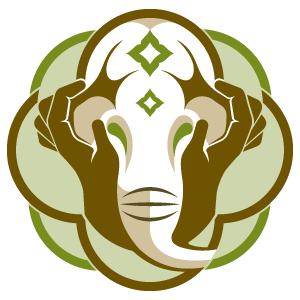Teaching foot care using a traditional knife
All of the Asian Elephant Support directors were pleased at the success of the "Hoof Knives for Mahouts-India" program. It is important that we help supply the people who have dedicated their lives to caring for the captive elephants, and protecting wild elephants, with the proper tools and equipment.
Like all animals, elephants depend upon the ability to find food, water, and shelter to survive. Good health starts with healthy feet. Even wild elephants have cracks in their pads and toenails, and for the elephants in human care, it is an important part of caring for them.
The bottom of an elephant's foot is a callus-like material similar to the "frog" on a horse's hoof. The majority of the foot is made up of cushiony material that supports the elephant's weight ─ almost like a big Nike tennis shoe!
Teaching foot care using a traditional knife
For the captive population, these traditional knives are used to trim the excess pad and nails, and to remove stones or other debris embedded in the elephant's foot.
However, daily foot care involves more than trimming the pad and nails. To maintain healthy feet, elephants must have adequate exercise and a proper diet. They need to have their feet inspected on a daily basis for abscesses caused by an injury or debris. Left untreated, an abscess can become deadly by spreading the infection to other parts of the body.
Skilled veterinarians in India are teaching mahouts the proper use of these tools to maintain healthy feet. In turn, some of these elephants are helping to protect their wild counterparts by patrolling the forest for illegal activities such as poaching.


